Redesign of Volvo’s new VNL goes more than skin deep
Whoever said all slippery trucks must be cast in the same mold? Volvo disproved that idea with the launch of its all-new VNL, a clean sheet design and radical departure from the truck it’ll replace in terms of both styling and performance.
More than 90% of the truck is new. And the new VNL also marks the first time Volvo designed a truck for the North American market from scratch.
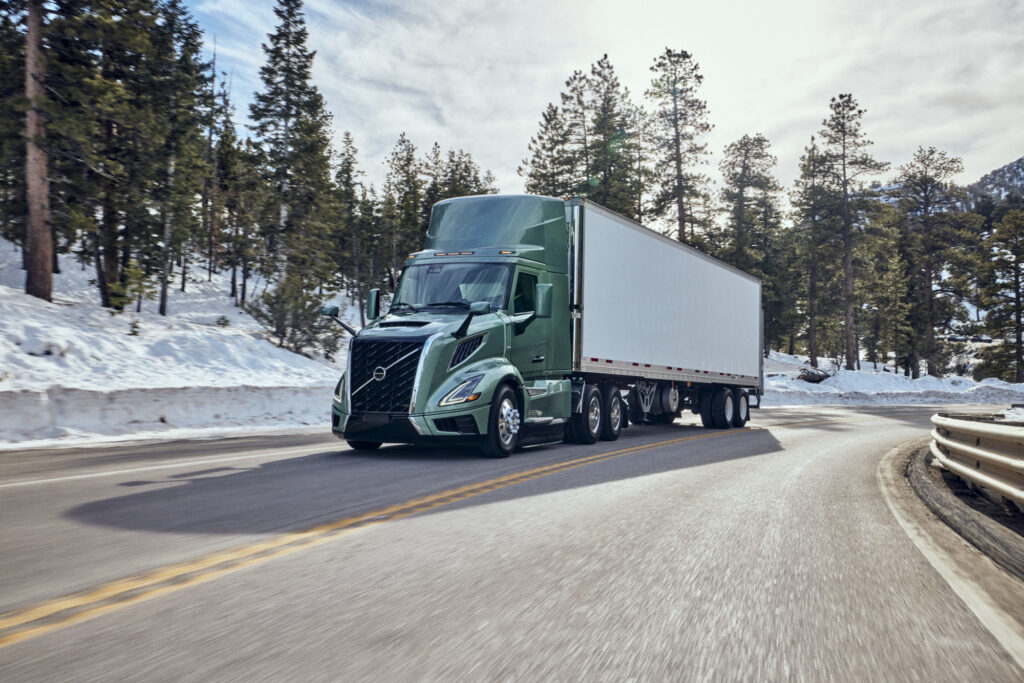
The original VN, introduced to the North American market in 1996, was built on a European cabover platform. The new VNL, for which Volvo will begin taking orders in April and put into production in the third quarter, was engineered and designed in North America, for North America.
It’s a slick looking and distinctive truck that smashes the notion that aero trucks must come in just one shape. Its designers were clearly freed of any shackles or limitations in their work, and the result is a truck that’s likely to enjoy broad acceptance among drivers, fleet managers and owner-operators.
The latter will appreciate the promised 10% fuel efficiency improvement. Add in industry-first safety features and Volvo is saying, with confidence, that this truck will bring customers $20,000 in additional value – per truck, every year.
More on how they arrive at those figures in a minute. But first, a bit about the launch. Volvo debuted the new VNL to the world online in late January and offered industry journalists an early look and quick on-track drive at its Customer Center in Virginia this week. But we weren’t the first to see it.
Late last year, 115 major customers were given a sneak peek under the most secret of conditions. (I’m told their cell phone cameras were even temporarily disabled). Those customers helped Volvo validate the logic and math behind their claims of added value.
“We are confident this truck will deliver customer value of $20,000,” said Magnus Koeck, Volvo’s vice-president, marketing and brand management. He cited improvements in fuel efficiency, safety, productivity, connectivity and uptime. “We believe these are quite conservative numbers.”
The truck was also designed not just to appeal to the fleet owners who’ll purchase it, but also the drivers who will operate it.
“There are so many enhancements in the driving, living and resting environment, because we are targeting a new generation of driver,” Koeck said. “We see they are more tech-savvy, more diverse, more female, different ethnicities, younger, innovators, early adopters and they also care about the environment and our planet.”
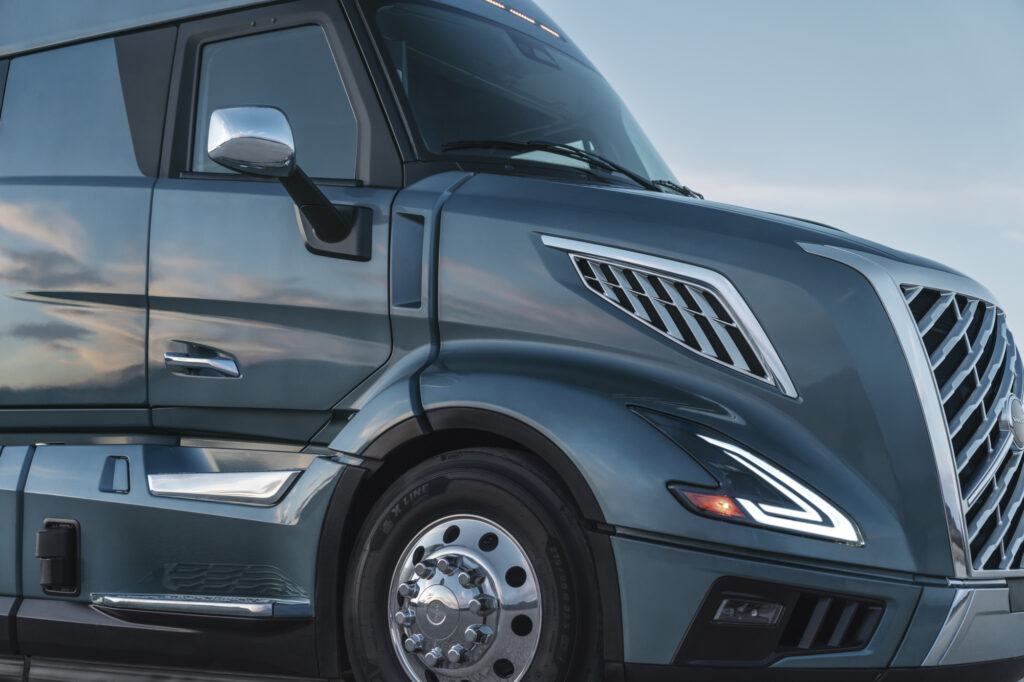
In some ways, it’s as though the design team achieved the impossible. For instance, the largest sleeper available is 74 inches, a full three inches smaller than the 77-inch sleeper available on the current VN. But step inside and it feels somehow larger.
Six configurations will be offered: the VNL 300 flat-roof day cab; VNL 440 mid-roof with 41-inch sleeper; the VNL 640 and 660 (mid- and high-roof, respectively) with 62-inch sleeper; and the VNL 840 and 860 (mid- and high-roof) 74-inch sleeper designs.
These trucks will serve as the platform that carry Volvo into a zero-emission future, capable of being configured to run on batteries, hydrogen fuel cells, or internal combustion engines, whether those be fueled by diesel today, or carbon-neutral bio-fuels in the future. Even autonomous operation, when the technology and industry are ready for that.
The truck may be powered by diesel initially, but it nonetheless accelerates Volvo’s decarbonization journey. A 10% reduction in fuel consumption, for instance, would be as beneficial to the environment as removing 10 trucks from a 100-truck fleet.
“The reality is, every gallon saved is 22.4 lb. of CO2,” pointed out Bobby Compton, product marketing manager with Volvo. So, how did they get there? Compton said aerodynamics account for 7% of the 10% efficiency improvements, and this required engineers to discover better ways to cut, connect, and move the wind around the vehicle.
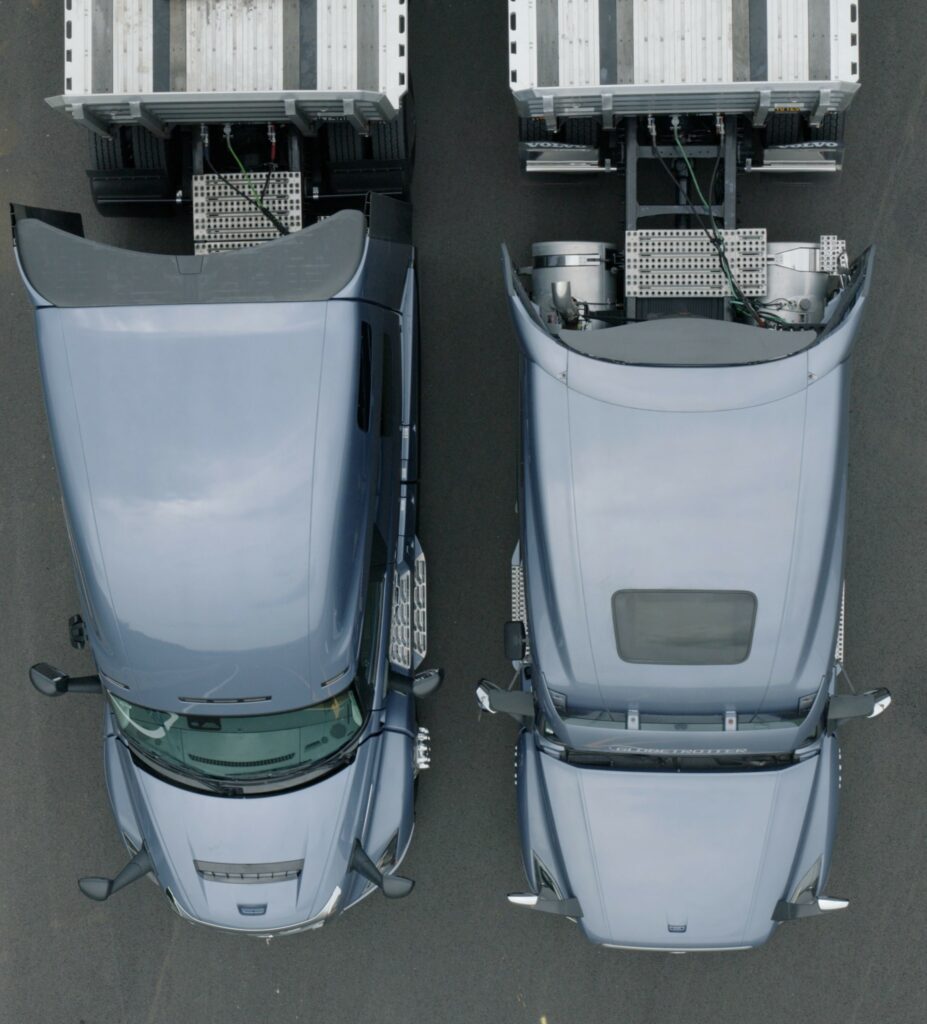
When it comes to cutting through the wind, Compton said the front hood curvature was reimagined and ground effects lowered. A more aggressive hood slope is immediately noticeable, but truly appreciated from behind the wheel where the hood-mounted mirrors were the only piece of the hood visible from the driver’s seat – and I like to sit high in the cab.
Windbreaker
The next step is to connect the wind to the truck, and this was achieved with a sloped windshield and wedge-shaped cab. “Every line on this all-new VNL was designed with a purpose, to keep that wind connected,” Compton said. An overhead image of the new VNL alongside the previous version provides the best view of the new shape.
The air is also moved around the truck, thanks to a more aerodynamic roofline and improved fairings that guide the wind around the cab and to the trailer. “You utilize the wind you can’t cut,” explained Compton.
The West Coast mirrors are more compact but still offer sufficient visibility.
An air intake on the hood isn’t there only for aesthetics, it serves a purpose, taking in the air and circulating it around the engine. Utilizing this airflow to better cool the engine allows for less fan-on time. And that fan is driven by horsepower that is better used turning the wheels. “Anytime horsepower being created by that engine is not being used to drive the tires is not of value to our customers,” Compton said.
Powertrain improvements
Another 3% fuel economy improvement can be traced to the powertrain. A faster-shifting I-Shift allows drivers to get to cruise speed – and the engine’s sweet spot – faster. And in applications where thousands of shifts a day are the norm, those 30% quicker shifts mean the truck is spending that much less time out of gear.
Volvo debuted its patented wave piston design in 2017, and has added a seventh wave to the design for more precise control of where oxygen is directed for more efficient combustion. The piston itself was reduced in size, while the connecting rod was extended for better rod ratio optimization and less parasitic loss. Volvo also introduced a new variable speed oil pump for more precise oil delivery.
To ensure customers get the most efficient spec’ for their application, Volvo has simplified the spec’ing process by offering three torque packages. Straight Torque is intended for those who want maximum performance, while fleets more focused on operating below 68 mph (109 km/h) can choose the Super Direct package for maximum efficiency. The I-Torque option is intended for fleets running higher speeds but wanting a more economical spec’ than Straight Torque. It’s a simpler way for customers to spec’ a truck and makes it easy to get the most out of the vehicle.
Powertrain offerings include the previously available 405, 425, and 455 hp ratings as well as a new 500-hp turbocompound engine with torque ratings between 1,850 and 1,950 lb.-ft.
Based on 110,000 miles (176,000 km) a year and diesel at US$3.86 a gallon, the new VNL will deliver about $5,157 in fuel savings annually, Volvo estimates. But where does the other $15,000 in added value come from?
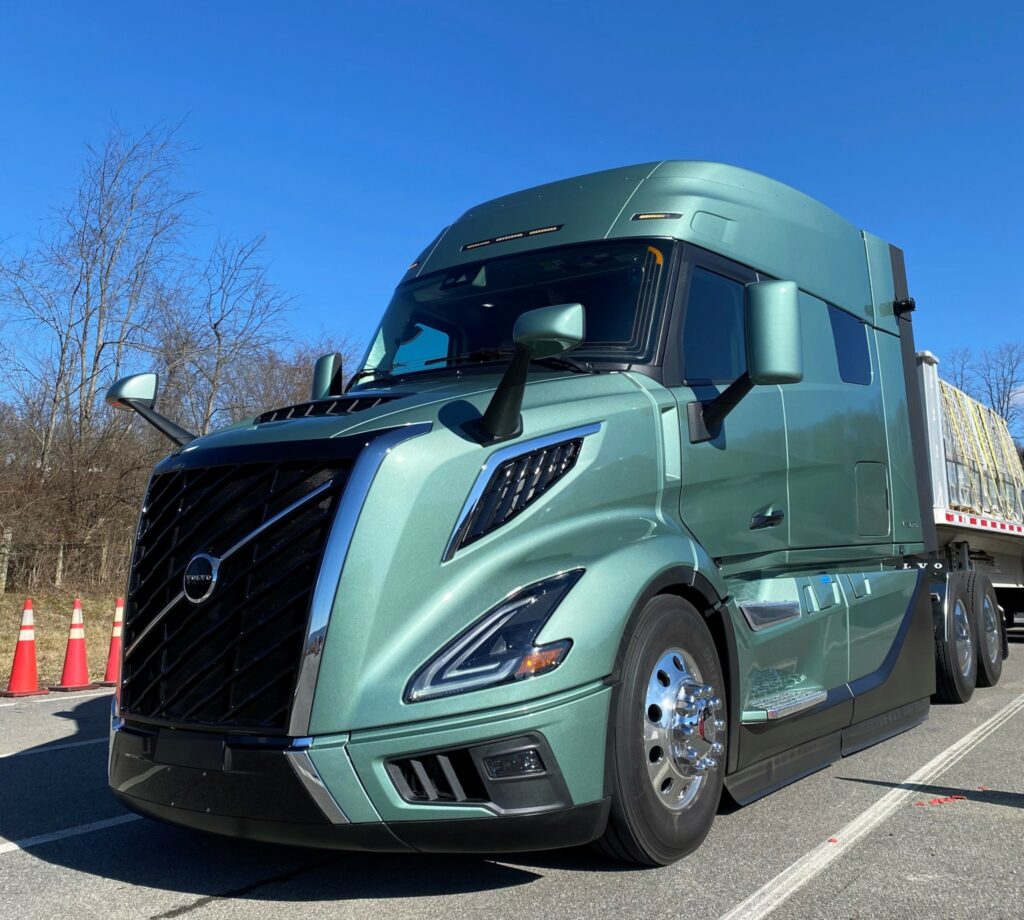
‘World’s safest truck’
Volvo is a modest brand, perhaps too modest at times. So, I sat up a little straighter in my seat when Koeck declared unequivocally the new VNL is “The world’s safest truck.”
Volvo debuts for the first time a proprietary active safety system, Volvo Active Driver Assist (VADA), which includes industry-first features such as side curtain airbags and e-call, which automatically calls 911 when the airbag is deployed or a rollover detected, providing specific location information for first responders.
Other features include lane centering, lane keep assist, short range side detection, pedestrian detection, and automatic braking. Product marketing manager Chris Stadler said VADA helps drivers see and stop, which can address the 31% of truck crashes that involve front-end impacts. Its radar has the ability to see rearward down the length of a 53-ft. trailer, addressing the 14% of wrecks involving side collisions.
It’s never easy to put a dollar figure on the crash that did not happen. But Volvo takes its best stab, citing available National Highway Traffic Safety Administration (NHTSA) and FMCSA crash data.
Stadler said VADA – and systems like it – can reduce the risk of front-end collisions by 82-92%, according to NHTSA. Using FMCSA stats that suggest an average large truck crash costs US$148,000, Volvo calculates that its VADA delivers value of US$5,834 a year in the form of crashes prevented.
“We don’t believe a Volvo truck should ever be in a collision – that’s our vision,” Compton said.
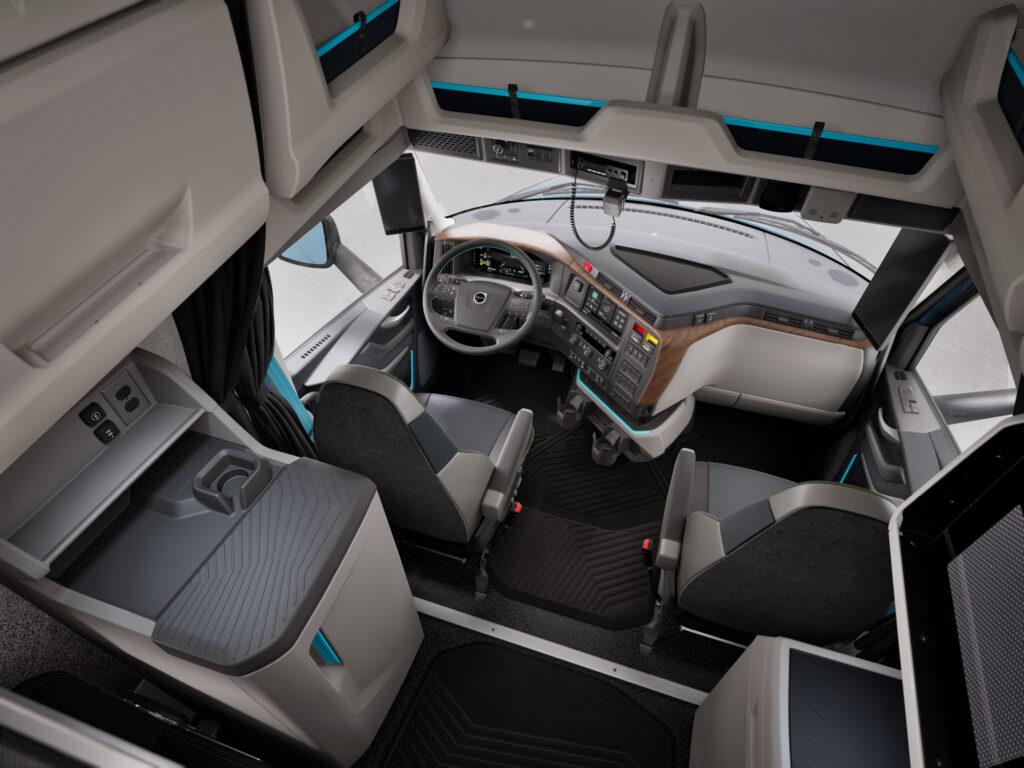
A more productive driver
If you’re keeping score, that’s $10,991 in annual savings Volvo says its new VNL will deliver. The truck also brings greater productivity to the driver’s daily life. It begins with a comfortable cab with larger fridge, an improved HVAC system with single sleeper control panel and folding bunk. The reclining bunk that allows drivers to lounge more comfortably while reading or watching TV will continue to be offered.
A new Volvo Parking Cooler provides eight hours of in-cab idle-free cooling. It’s mounted below the chassis rather than at the rear of the cab to reduce noise, and two compressors were combined into one to reduce weight and improve packaging.
Drivers stopping in cold weather have three options to keep the cab warm without idling. A short stop heater available on the day cab will keep the truck warm for 30 minutes using radiant coolant from the engine, ideal for quick stops or loading and unloading. Volvo will continue to offer a 2 kW Espar fuel-fired bunk heater, as well as a new 6 kW heater that’s tied into the truck’s engine and coolant system.
Volvo also launched a My Truck app, which allows the driver to set the climate controls from their phone. The app also allows them to check their fluid and fuel levels. Stadler said more options will be added to the app over time. All told, Volvo claims its productivity enhancements and idle reduction options amount to about $5,000 a year in savings.
Connectivity and uptime are additional areas that provide customers with a tangible payback. Volvo has moved to a 24-volt electrical architecture it says extends the life of all electrical components and reduces battery failures. An ultracapacitor will start the truck if the battery voltage is too low, reducing battery-related downtime.
Volvo conducted an analysis of more than 10,000 trucks over six months and found remote programming and diagnostics reduced faults by 51%, while remote updates slashed shop visits by 24%. The truck maker calculates this to provide a savings of up to $3,400 a year bringing the total value proposition to the stated $20K/year.

Trim packages
Many of the enhancements on the new VNL were designed to save customers money, but others are aesthetic in nature and designed to appeal to the next-generation driver who wants to operate a tech-laden vehicle with modern, automotive-inspired features and a distinctive, edgy look.
The new VNL can be had in four trim levels: Core, Edge, Edge Black, and Ultimate. Corresponding interior packages are also available, but they can be mixed-and-matched per customer preference. There’s not a boring one among them and each caters to an individual’s personal style. Give me Edge Black, please.
Volvo also took the opportunity to modernize features such as the ignition (it’s now a push button style) and the air brake knobs, which have been replaced with European-style levers that are easier and quieter to operate. Volvo will introduce the new VNL to the Canadian market at Truck World in April, and begin taking orders soon after.
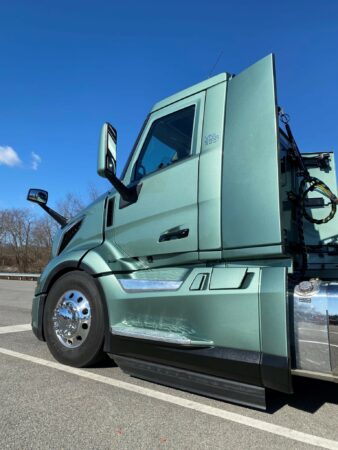
Have your say
This is a moderated forum. Comments will no longer be published unless they are accompanied by a first and last name and a verifiable email address. (Today's Trucking will not publish or share the email address.) Profane language and content deemed to be libelous, racist, or threatening in nature will not be published under any circumstances.